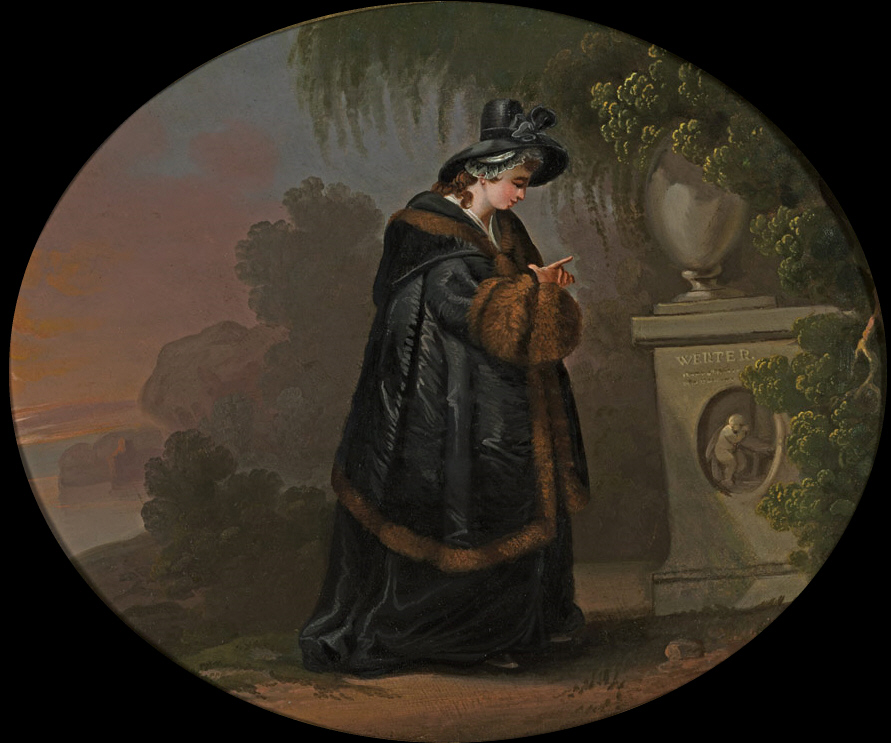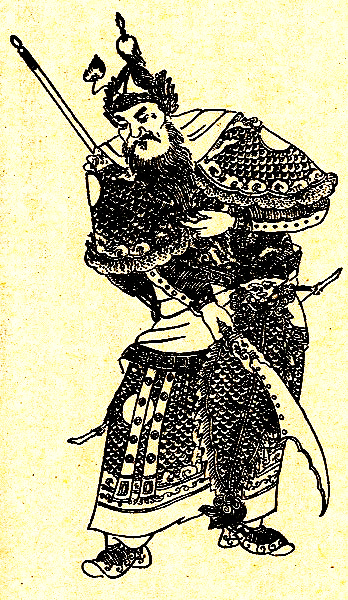|
LĆŖ Duy Mįŗt
LĆŖ Duy Mįŗt ( vi-hantu, é»ē¶, 1738–1767) was a Vietnamese rebel leader who was active in the 18th century. Mįŗt was a son of Emperor LĆŖ Dį»„ TĆ“ng. In 1738, he planned a plot against the Trį»nh lord together with two princes, his brother LĆŖ Duy QuĆ½ and LĆŖ Duy ChĆŗc (son of LĆŖ Hy TĆ“ng), but failed. They had to flee, and hid somewhere in Thanh HĆ³a.''Viį»t Nam sį» lĘ°į»£c'', Quyį»n 2, ChĘ°Ę”ng 5 In 1740, Mįŗt launched a rebellion against the Trį»nh lords in Thanh HĆ³a. He attacked HĘ°ng HĆ³a and SĘ”n TĆ¢y. He was defeated by the Trį»nh army, retreated to Nghį» An, then to Muang Phuan, and occupied TrƬnh Quang Mountain as his base area. In 1764, he sought aid from Nguyį» n PhĆŗc KhoĆ”t, but was refused because the Nguyį» n lords did not want to engage in conflict with the Trį»nh lords. In 1767, Trį»nh Doanh died, and his son Trį»nh SĆ¢m succeeded him as the head of the Trinh lords. Hearing the news, Mįŗt attacked Thanh ChĘ°Ę”ng and HĘ°Ę”ng SĘ”n, ... [...More Info...] [...Related Items...] OR: [Wikipedia] [Google] [Baidu] |
Trį»nh SĆ¢m
Trį»nh SĆ¢m (, 9 February 1739 ā 13 September 1782) ruled northern Vietnam from 1767 to 1782 AD. He ruled with the title "TÄ©nh ÄĆ“ VĘ°Ę”ng" () and was one of the last of the powerful Trį»nh lords. Trį»nh SĆ¢m defeated the ancient enemy of the northern state, the Nguyį» n lords in the south. The Trį»nh line was separate from the royal LĆŖ dynasty, and the officially recognized emperor was LĆŖ Hiį»n TĆ“ng (1740ā1786), who continued to occupy the royal throne in ThÄng Long (modern-day Hanoi), but without real power. Early reign Trį»nh Sam was given rule over northern Vietnam by his father Trį»nh Doanh in 1767. Five years after he took power, the TĆ¢y SĘ”n rebellion started in the south. During his lifetime, the TĆ¢y SĘ”n rebels focused all their efforts against the Nguyį» n lords, specifically against Nguyį» n Phuc Thuan who had gained the throne as a young boy. As the TĆ¢y SĘ”n rebellion gained strength, the Trį»nh saw the Nguyį» n weakening month by month. Trį»nh ... [...More Info...] [...Related Items...] OR: [Wikipedia] [Google] [Baidu] |
Nguyį»
n Lords
The Nguyį» n lords (, äø»é®; 1558ā1777, 1780ā1802), also known as the Nguyį» n clan (; ), were Nguyį» n dynasty's forerunner and a feudal noble clan ruling southern Äįŗ”i Viį»t in the Revival LĆŖ dynasty. The Nguyį» n lords were members of the House of Nguyį» n PhĆŗc. The territory they ruled was known contemporarily as ÄĆ ng Trong (Inner Realm) and known by Europeans as the Kingdom of Cochinchina and as Kingdom of Quįŗ£ng Nam (; ) by Imperial China, in opposition to the Trį»nh lords ruling northern Äįŗ”i Viį»t as ÄĆ ng NgoĆ i (Outer Realm), known as the "Kingdom of Tonkin" by Europeans and "Kingdom of Annam" (; ) by Imperial China in bilateral diplomacy. They were officially entitled, in Sino-Vietnamese, the ' () in 1744 when lord Nguyį» n PhĆŗc KhoĆ”t self-proclaimed himself to elevate his status equally to Trį»nh lords's title known as the ' (; ). Both Nguyį» n and Trį»nh clans were ''de jure'' subordinates and fief of the LĆŖ dynasty. However, the ''d ... [...More Info...] [...Related Items...] OR: [Wikipedia] [Google] [Baidu] |
Suicides By Self-immolation
Suicide is the act of intentionally causing one's own death. Risk factors for suicide include mental disorders, physical disorders, and substance abuse. Some suicides are impulsive acts driven by stress (such as from financial or academic difficulties), relationship problems (such as breakups or divorces), or harassment and bullying. Those who have previously attempted suicide are at a higher risk for future attempts. Effective suicide prevention efforts include limiting access to methods of suicide such as firearms, drugs, and poisons; treating mental disorders and substance abuse; careful media reporting about suicide; improving economic conditions; and dialectical behaviour therapy (DBT). Although crisis hotlines, like 988 in North America and 13 11 14 in Australia, are common resources, their effectiveness has not been well studied. Suicide is the 10th leading cause of death worldwide, accounting for approximately 1.5% of total deaths. In a given year, this is ... [...More Info...] [...Related Items...] OR: [Wikipedia] [Google] [Baidu] |
Suicides In Vietnam
Suicide is the act of intentionally causing one's own death. Risk factors for suicide include mental disorders, physical disorders, and substance abuse. Some suicides are Impulsivity, impulsive acts driven by Stress (biology), stress (such as from financial or Suicide in colleges in the United States, academic difficulties), Interpersonal relationship, relationship problems (such as breakups or divorces), or harassment and bullying. Those who have previously attempted suicide are at a higher risk for future attempts. Effective suicide prevention efforts include limiting access to methods of suicide such as firearms, drugs, and poisons; treating mental disorders and substance abuse; careful mass media, media reporting about suicide; improving economic conditions; and dialectical behaviour therapy (DBT). Although crisis hotlines, like 988 (telephone number), 988 in North America and Lifeline (crisis support service), 13 11 14 in Australia, are common resources, their effecti ... [...More Info...] [...Related Items...] OR: [Wikipedia] [Google] [Baidu] |
People Of Revival LĆŖ Dynasty
The term "the people" refers to the public or common mass of people of a polity. As such it is a concept of human rights law, international law as well as constitutional law, particularly used for claims of popular sovereignty. In contrast, a people is any plurality of persons considered as a whole. Used in politics and law, the term "a people" refers to the collective or community of an ethnic group or nation. Concepts Legal Chapter One, Article One of the Charter of the United Nations states that "peoples" have the right to self-determination. Though the mere status as peoples and the right to self-determination, as for example in the case of Indigenous peoples (''peoples'', as in all groups of indigenous people, not merely all indigenous persons as in ''indigenous people''), does not automatically provide for independent sovereignty and therefore secession. Indeed, judge Ivor Jennings identified the inherent problems in the right of "peoples" to self-determination, as i ... [...More Info...] [...Related Items...] OR: [Wikipedia] [Google] [Baidu] |
Vietnamese Princes
Vietnamese may refer to: * Something of, from, or related to Vietnam, a country in Southeast Asia * Vietnamese people, or Kinh people, a Southeast Asian ethnic group native to Vietnam ** Overseas Vietnamese, Vietnamese people living outside Vietnam within a diaspora * Vietnamese alphabet * Vietnamese cuisine * Vietnamese culture * Vietnamese language See also * Viennese (other) * List of Vietnamese people List of famous or notable Vietnamese people (''NgĘ°į»i Viį»t'' or ''NgĘ°į»i gį»c Viį»t -'' Vietnamese or Vietnamese-descent). This list is incomplete. Art and design Fashion *Äįŗ·ng Thį» Minh Hįŗ”nh, fashion designer *Nguyį» n ThĆ¹ ... * {{disambiguation Language and nationality disambiguation pages ... [...More Info...] [...Related Items...] OR: [Wikipedia] [Google] [Baidu] |
1770 Deaths
Events January– March * January 1 – The foundation of Fort George, Bombay is laid by Colonel Keating, principal engineer, on the site of the former Dongri Fort. * February 1 – Thomas Jefferson's home at Shadwell, Virginia is destroyed by fire, along with most of his books. * February 14 – Scottish explorer James Bruce arrives at Gondar, capital of Abyssinia (modern-day Ethiopia) and is received by the Emperor Tekle Haymanot II and Ras Mikael Sehul. * February 22 – Christopher Seider, an 11-year-old boy in Boston in the British Province of Massachusetts Bay, is shot and killed by a colonial official, Ebenezer Richardson. The funeral sets off anti-British protests that lead to the massacre days later. * March 5 – Boston Massacre: Eleven American men are shot (five fatally) by British troops, in an event that helps start the American Revolutionary War five years later. * March 21 – King Prithvi Narayan Shah shifts to th ... [...More Info...] [...Related Items...] OR: [Wikipedia] [Google] [Baidu] |
HoĆ ng CĆ“ng Chįŗ„t
Huang (; zh, t=é», s=é», c=, p=, first=t) is a Chinese surname. While ''HuĆ”ng'' is the pinyin romanization of the word, it may also be romanized as Hwang, Wong, Waan, Wan, Waon, Hwong, Vong, Hung, Hong, Bong, Eng, Ng, Uy, Wee, Oi, Oei, Oey, Ooi, Ong, or Ung due to pronunciations of the word in different dialects and languages. It is the 96th name on the ''Hundred Family Surnames'' poem.K. S. Tom. 989(1989). Echoes from Old China: Life, Legends and Lore of the Middle Kingdom. University of Hawaii Press. . This surname is known as Hwang in Korean. In Vietnamese, the name is known as HoĆ ng or Huį»³nh. Huang is the 7th most common surname in China. Hoang/Huynh is the 5th most common surname in Vietnam. The population of Huangs in China and Taiwan was estimated at more than 35 million in 2020; it was also the surname of more than 2 million overseas Chinese, 5.7 million Vietnamese (6%), and an estimated 1 million Koreans (The 2015 census of South Korea revealed it was the sur ... [...More Info...] [...Related Items...] OR: [Wikipedia] [Google] [Baidu] |
Nguyį»
n Danh Phʰʔng
Nguyį» n Danh PhĘ°Ę”ng ( vi-hantu, é®åč³, ?–1751) was a Vietnamese rebel leader who was active in the 18th century. He was born in YĆŖn Lįŗ”c, SĘ”n TĆ¢y (a part of modern VÄ©nh YĆŖn, VÄ©nh PhĆŗc Province). He rebelled against Trį»nh lord in 1740, and occupied Tam Äįŗ£o Mountain. Local people called him Quįŗn Hįŗ»o. Later, he occupied Ngį»c Bį»i Mountain, titled himself ''Thuįŗn ThiĆŖn Khįŗ£i Vįŗn Äįŗ”i NhĆ¢n'' (é 天åé大äŗŗ), and started to collect taxes in TuyĆŖn Quang. He was defeated and captured by Trį»nh Doanh in 1751. In the same year, he was executed in Thang Long together with Nguyį» n Hį»Æu Cįŗ§u.''Viį»t Nam sį» lĘ°į»£c'', Quyį»n 2, ChĘ°Ę”ng 5 See also *Nguyį» n Hį»Æu Cįŗ§u *HoĆ ng CĆ“ng Chįŗ„t *LĆŖ Duy Mįŗt References *''KhĆ¢m Äį»nh Viį»t sį» ThĆ“ng giĆ”m cĘ°Ę”ng mį»„c'' *Viį»t Nam sį» lĘ°į»£c ( vi-hantu, č¶åå²ē„, , lit. "Outline History of Vietnam"), was the first history text published in the Vietnamese language and t ... [...More Info...] [...Related Items...] OR: [Wikipedia] [Google] [Baidu] |
Nguyį»
n Hį»Æu Cįŗ§u
Nguyį» n Hį»Æu Cįŗ§u ( vi-hantu, é®ęę±, 1712ā1751) was the leader of a rebellion of Tonkin peasantry in the 18th century. Biography Nguyį» n Hį»Æu Cįŗ§u was born in a poor family in LĆ“i Äį»ng (TĆ¢n An, Thanh HĆ , Hįŗ£i DĘ°Ę”ng, Viį»t Nam now). He was very good at martial art and swimming. Because of being poor, he was a robber. After that, he followed a revolution led by Nguyį» n Cį»« and became a talented general. He was called Quįŗn He. The revolution came from Äį» SĘ”n (Hįŗ£i PhĆ²ng), moved to Kinh Bac, ÄĆ“ng Kinh then Son Nam, Thanh Hoa, Nghe An. When Nguyį» n Cį»«, the leader of the revolution, was arrested, Nguyį» n Hį»Æu Cįŗ§u led the army to Äį» SĘ”n and VĆ¢n Äį»n. He was captured by Phįŗ”m ÄƬnh Trį»ng, and executed in Thang Long in March 1751. See also * HoĆ ng CĆ“ng Chįŗ„t * Nguyį» n Danh PhĘ°Ę”ng * LĆŖ Duy Mįŗt References *ć 大č¶å²čØå Øęøēŗē·ØĀ·å·ä¹åć *''Giai thoįŗ”i vÄn hį»c Viį»t Nam'' - HoĆ ng Ngį»c PhĆ”ch, Kiį»u T ... [...More Info...] [...Related Items...] OR: [Wikipedia] [Google] [Baidu] |



